
Matchbox Twenty's Kyle Cook picks 10 essential guitar albums
Anybody who has been near a radio since 1996 has heard Kyle Cook's wildly creative and versatile guitar playing on a cavalcade of Matchbox Twenty hits. With over 30 million albums sold (including 12 million alone for their debut, Yourself Or Someone Like You), the band's music has become part of people's DNA.
Gauging his own time frame as a listener, Cook says that grew up just as a seismic shift was about to take place. "I started getting really into music right when albums were becoming not as important as they once were," he says. "They weren’t seen as complete artistic statements. And nowadays, it’s all about the single – people don’t listen to albums; they have ‘playlists.’ But I’ve caught up over the years and listened to the classics, and of course, they've influenced my guitar playing."
Asked to compile his list of 10 essential guitar albums, Cook explains that he zeroed in on records that feature the instrument being used in non-traditional ways. "I like it when somebody shakes things up," he says. "Take the blues, for example: You have a ton of virtuosic guitarists who play in very standard forms, but I listen for players who aren’t ‘sound-alike’ guys. It’s like with most things: Who’s doing something original?”
Even so, whittling down his choices of groundbreakers and rules-crunchers to an even 10 was something of a tall order for Cook. "I could easily come up with 20 or even 30," he says. "Picking just 10 is touch. There’s so many records that have inspired me over the years, and my iTunes collection is quite massive. So, if we look at this as sort of like ‘desert-island discs,’ these are the albums I'd want to take with me."
On the following pages, Cook runs down what he considers to be 10 essential guitar albums (listed alphabetically by artist). And assuming you're not stranded on a desert island this summer, Matchbox Twenty will be on tour in the US with the Goo Goo Dolls. Click here for dates and ticket info.
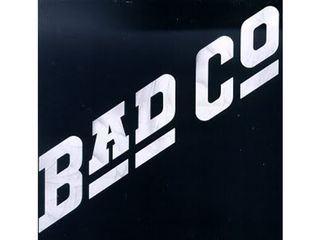
Bad Company - Bad Company (1974)
“One of the staples of teenage rock. This is some of the stuff that really inspired me to pick up the guitar. Can’t Get Enough, Ready For Love and the title cut – those are awesome hard rock songs with powerful riffs and hot solos.
“These songs are so good and solid, they’ll never go away. You’ll walk into a smoky bar in 20 years, and there’ll be a band on stage, the guitar player with have a Les Paul, and they’ll be playing Ready For Love. That’s just the way it’s gonna be.
“The sound is big, crunchy and timeless. It takes you right back to being a kid and dreaming of playing the guitar.”
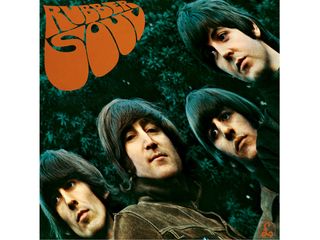
The Beatles - Rubber Soul (1965)
“I have to have a Beatles album on a list like this, so I’m going with Rubber Soul. Drive My Car is such a great song with really cool guitar hooks in it – the solo is way out in front, very energetic. There’s a nice acoustic-folk element in Norwegian Wood, and Nowhere Man has those electrics that still sound incredible.
“The level of song craftsmanship is impeccable, of course, but the way The Beatles blended rhythm and lead guitars isn’t talked about nearly enough. Their arrangements from a guitar standpoint are so interesting; one part works beautifully with the next. As great as the songs are, what they did with their instruments is just as important.
“The song Girl is touching, infectious, dark, wistful, strange – and I just love the way the acoustic guitar sounds.”
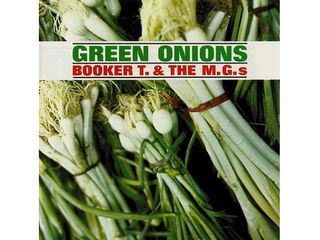
Booker T & The MG's - Green Onions (1962)
“I go back to this album a lot. It's great music if you're hanging out or sitting by the pool. It holds up beautifully – nothing about it sounds dated.
“There’s no vocals, but the arrangements, the grooves and the guitar work are so solid and infectious, you don’t need singing. Each song holds your interest from start to finish. The music was very influential and brought a lot of attention to the whole Stax sound.
“It’s simple, too. You don’t have to be a virtuoso to appreciate this stuff and to play it. It’s one of those examples of songs that have meaningful parts played well, really tight and in the pocket, and everything fits together the way it should.”
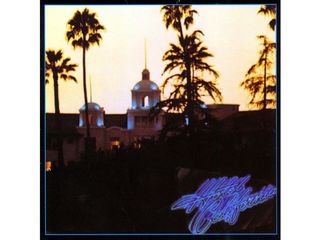
The Eagles - Hotel California (1976)
“The song Hotel California is part of the ether. It’s a masterpiece of songwriting, but it also features a masterful guitar arrangement. You remember each and every lick – everything is so beautifully composed – and, of course, there's the solos.
Anybody who picks up the guitar, regardless of what genre they might love, has to learn to play Hotel California. It’s played a role in the development of probably every guitarist since it came out.
“There’s a lot of great stuff on this album – New Kid In Town, Victim Of Love, Life In The Fast Lane – and every song has brilliant and memorable guitar parts. These are rock staples, all of them.”
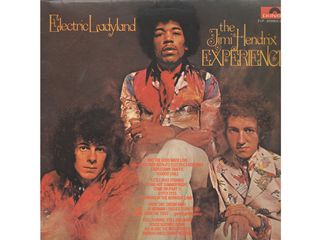
The Jimi Hendrix Experience - Electric Ladyland (1968)
“A pivotal moment in record production and guitar playing. Jimi Hendrix was an amazing soloist, of course, but being a great guitar player isn’t always based on your leads – it’s about the bigger picture. Jimi was a visionary.
“The arrangements and the sonics on this album are groundbreaking. I learned a lot about how to layer sounds from Electric Ladyland. There are times when Jimi even made the guitar sound like something else, and that’s pretty impressive, especially given the technology he was dealing with at the time. He had such a unique approach, and he was so versatile. An amazing album.”
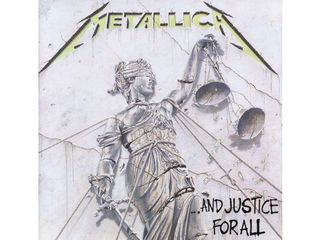
Metallica - ...And Justice For All (1988)
“I started playing violin when I was 11. Once I got into rock ‘n’ roll, though, the violin wasn’t so cool anymore. I got a guitar, the half-stack amp, and I listened to records that would piss of my parents. All of a sudden, it was [in his best Nigel Tufnel voice], ‘Do you hear the sustain?’ Check out that sustain!’
“Metallica were always such a cool, unapologetic guitar band. They were kind of the Led Zeppelin of my generation. I remember learning the licks, getting the guitar tablature for One, Blackened, Eye Of The Beholder – it was a real goal of mine to be able to play those songs.
“There were always these very interesting guitar arrangements, and they seemed to have a classical feel to them. At the same time, James and Kirk would break into some bluesy things, as well. There wasn’t just one sound or style going on.
“James is pretty impressive – the speed of those downstrokes, the percussiveness. He’s a very underrated rhythm guitar player but one who’s totally unique."
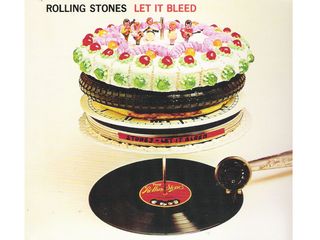
The Rolling Stones - Let It Bleed (1969)
“You’ve got Gimme Shelter, Midnight Rambler, You Can’t Always Get What You Want, Let It Bleed – so many great songs, and Keith Richards is unbelievable on all of them.
“I love the way he recorded his acoustics sometimes to make them sound like electrics. You listen to these songs, and you just can’t tell what’s electric and what’s acoustic. Plus he was exploring different tunings, which gave some of the songs interesting textures. He doesn’t just give you one sound or one style; he’s always changing it up.
“It’s more of a rock album than what they did before, but the blues element is really strong – that's what Keith came up playing, of course. His guitar work on Love In Vain is incredibly lyrical.”
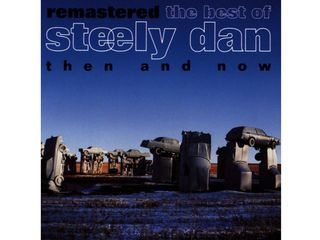
Steely Dan - The Best Of Steely Dan: Then And Now (1993)
“This was a big part of my musical life. Steely Dan had their pick of the best session dudes around – they were like a revolving door of hot players – and they made the most of it.
“Hey Nineteen, Bodhisattva, Deacon Blues – the songs are so hooky. They were pop, they were jazzy, they had a rock edge – no matter what you were into, there were sides to Steely Dan that would appeal to you. Do It Again had that really cool atonal moment with the sitar; it kind of drops out of key and then slides back. Brilliant.
“Like a lot of people, I thought it was just one core group of musicians. Becker was always in there, but I didn’t know they were using all of these amazing session dudes. I was like, ‘How does that one guy play so many incredible guitar parts? When’s he going to get to the bottom of his bag of tricks?’
“It wasn’t till later, when I found out it was many players, that I was like, ‘Ohhh, now I get it.’ But it was a great move on their part, though, because it gave each song and each solo a unique identity.”

U2 - Achtung Baby (1991)
“Mysterious Ways, Even Better Than The Real Thing, One – these songs harken back to Electric Ladyland, the way a guitar can be used in so many non-traditional ways. The Edge has always been creative, but he takes it to yet another level here.
“This record came kind of midway through U2’s career, and it really made an impression on me. Everything that The Edge was doing made me look at the guitar in a new way and think harder about what you could do with it. The songs are strong, too – you’ll hear them for years and years to come.”
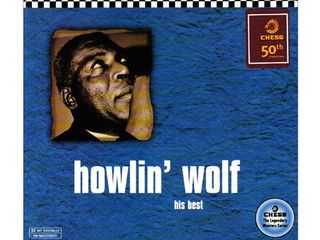
Howlin' Wolf - His Best (Chess 50t Anniversary Collection)
“Looking over my list, I realize that I don’t have any Led Zeppelin, but in a way, citing this album is an homage to Zeppelin because they took so much from this music. I discovered people like Howlin’ Wolf through Led Zeppelin.
“Smokestack Lightnin’, How Many More Years, Evil, Moanin’ At Midnight – right from the top, you’ve got some real classics. Some of it’s surprising, too. Sitting On Top Of The World doesn’t have that standard blues rhythm – there’s some samba-like grooves going on. And then there’s Spoonful, which of course, Eric Clapton covered with Cream.
“Howlin’ Wolf’s style was very understated, but it really worked. And, of course, you had his other guitar player, Hubert Sumlin, who was very young at the time but absolutely incredible. There weren’t a lot of guitar breaks – the parts were more fills and little moments – but they were really raw and powerful. This music still sounds very fresh to me.”

Joe is a freelance journalist who has, over the past few decades, interviewed hundreds of guitarists for Guitar World, Guitar Player, MusicRadar and Classic Rock. He is also a former editor of Guitar World, contributing writer for Guitar Aficionado and VP of A&R for Island Records. He’s an enthusiastic guitarist, but he’s nowhere near the likes of the people he interviews. Surprisingly, his skills are more suited to the drums. If you need a drummer for your Beatles tribute band, look him up.

"It may have bothered him that people didn’t recognise his guitar virtuosity, which might be why the song devotes so much space to his shredding": A music professor breaks down the theory behind Prince's When Doves Cry

“It didn’t even represent what we were doing. Even the guitar solo has no business being in that song”: Gwen Stefani on the No Doubt song that “changed everything” after it became their biggest hit

"It may have bothered him that people didn’t recognise his guitar virtuosity, which might be why the song devotes so much space to his shredding": A music professor breaks down the theory behind Prince's When Doves Cry

“It didn’t even represent what we were doing. Even the guitar solo has no business being in that song”: Gwen Stefani on the No Doubt song that “changed everything” after it became their biggest hit
Most Popular








